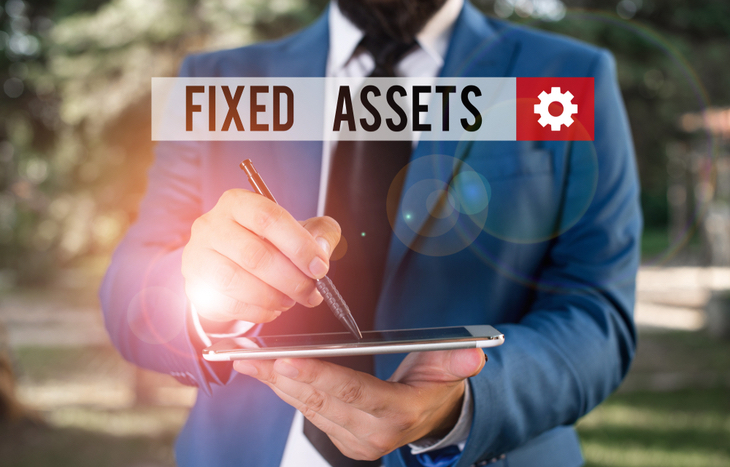What is a Fixed Asset?
If you operate a factory, you rely on machinery to produce salable goods. If you’re a freight company, your fleet of trucks is the key to making money. Every business has fixed assets that are responsible for generating revenue and fueling business success. Fixed assets are long-term pieces of equipment or property owned and used in operations, to help generate revenue. This can be property, equipment, buildings or other similar tangible items.
A fixed asset isn’t one that’s secured in place, unable to move. On the contrary, many fixed assets like vehicles and electronic equipment are mobile and frequently move from one place to another. The “fixed” moniker comes from their position on the balance sheet. They’re fixed in place from one period to another. They’re subject to depreciation, which is an important consideration in representing them as ongoing assets on the balance sheet.
Here’s a look at fixed assets and what they mean for companies and investors alike—and how to identify their role in revenue-generating opportunities.

Types of Fixed Assets
Also called capital assets or property, plant, and equipment (PP&E), fixed assets represent the most important tangible assets of a business. They’re instrumental in business operations and a critical part of the company’s ability to generate revenue. Some of the most common types of fixed assets include:
- Buildings and facilities
- Capital and leasehold improvements
- Computers and electronics
- Factory equipment and machinery
- Automobiles and specialty vehicles
- Furniture and furnishings
- Construction equipment
Not every tangible asset is fixed. In fact, many are current assets—assets liquidated for cash within one year. These types of assets include inventory and some types of investment products. Fixed assets are those that will stay on the company’s balance sheet for consecutive periods.
Current vs. Noncurrent Assets
Current assets are any assets that a business can expect to turn into cash within one year. While they might show up on the company’s balance sheet as part of a quarterly report, they’re not capital assets. These assets are sometimes called cash equivalents, since the business will ultimately unload them for cash at some point within the period.
Fixed assets are noncurrent assets. They’re present on the balance sheet for consecutive periods alongside other intangible assets such as intellectual property or trademarks. Most fixed assets are subject to depreciation for as long as they remain on the company’s balance sheet.
What is Asset Depreciation?
Assets have inherent value, in addition to their revenue-generating capabilities. But, because they’re not sold off in an accounting period, businesses need to account for asset value over the entire life of the asset. This happens through periodic depreciation.
Asset depreciation involves expensing a portion of the asset’s value each year. As a result, the inherent value of the asset falls over time. The amount depreciated each year should roughly match the amount of revenue the equipment generates. For example, if a piece of equipment costs $10,000 and the company expects to get five years of use out of it, the annual depreciation of the equipment will be $2,000.
It’s important to note that depreciated value isn’t the market value of the asset, which may fetch a higher price. For example, three years in, the value of the asset listed above might be $4,000; however, the company might be able to sell it for $5,500.
Why Does a Company Report Fixed Assets?
Reporting fixed assets on the balance sheet helps to provide a clearer picture of the company’s total net worth.
For example, if a business applies for a $20,000 small business loan, the lender will likely need collateral to secure the loan. If the company has a piece of equipment on its balance sheet worth $25,000, it shows the lender that there’s collateral to secure the loan.
In other situations, capital assets provide better context for other financial reporting. For example, if an asset-heavy business makes capital investments, its cash flow statement may be poor for a period. However, the balance sheet will show new noncurrent assets to give investors context for the dip in free cash.
At the end of the day, assets are assets: they provide value to the company. Understanding the value of each asset in juxtaposition to its revenue generating capabilities provides both stakeholders and shareholders with important insight about the health and viability of the business’ operations.
The Drawbacks of Fixed Assets
Capital assets aren’t liquid, which means a business will have difficulty offloading them for cash. Moreover, these assets are instrumental to operations and revenue generation—selling them isn’t advantageous to the company. Typically, the best time for a business will sell fixed assets is either at the end of their depreciable life or in the event of insolvency.
Fixed assets also traditionally come with upkeep costs. This requires Enterprise Resource Planning (ERP) and Enterprise Asset Management (EAM) by the company. Businesses need to factor in the cost of keeping capital assets up and running, and take steps to keep them viable for the life of the equipment. This becomes objectively more difficult the older an asset becomes.
Fixed Assets are Essential
Almost every business relies on noncurrent assets in some form or fashion. These investments are what help a company grow. They’re of vital importance in creating free cash flow, and factor into the company’s net worth. Most important, they’re an indicator of the company’s ability to continue revenue-generating operations.
As an investor, it’s important to understand these metrics. To learn more about investing in profitable businesses, sign up for the Trade of the Day e-letter below.
At the end of the day, assets are assets: they bring the company value. Those the company keeps on its books from period-to-period represent its largest and most important assets. The more of them there are, the stronger the company’s opportunities when it comes to revenue-generating activity.





